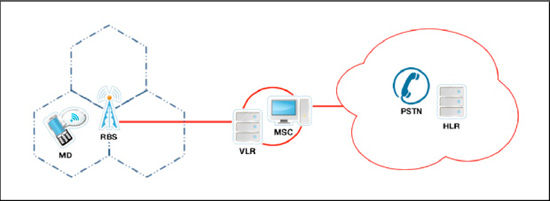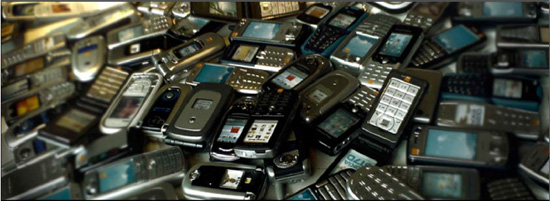Preface
“A journey of a thousand miles begins with a single step . . .”
–Lao-Tzu
Mobile Device Evolution
These are exciting times for those who live and work with technology every day, whether they are young people who have been using technology since birth, or, like many others, have had to adapt to it.
It is an exciting moment because in recent years there is no other example of technology that has changed our lives so dramatically as has the evolution of the mobile device.
Since in knowing the past you'll be more prepared to understand the present and help create the future, in this book we'll precede our discussion of how to get there with a short history of smartphones, with our beloved iPhone or iPad in hand.
Humble Beginnings: The Early Mobile Web
Everything started in 1908, when Nathan B. Stubblefield of Murray, Kentucky was issued the first USpatent for a wireless telephone.
Forty years later, the zero generation (0G) of mobile telephones was introduced. Mostly used as car phones, they were meant to connect mobile users in cars to the fixed public telephone network.
The zero generation was not officially categorized as mobile device technology since it did not support the automatic change of channel frequency during calls (Handover), which would allow the user to move from one cell (the present-day radio base station covered area) to another.

Figure 1. The zerogeneration: Mobile car phone (1960s)
In the 1960s, a new full-duplex VHF/UHF radio system launched by Bell Systems, and subsequently improved by AT&T, called “Improved Mobile Telephone Service” (IMTS), brought many improvements, such as direct dialing rather than connection through an operator, and higher bandwidth.
The first-generation (1G) cellular systems, developed between the late 1960s and the early 1970s, were analog, and still based on IMTS technology. The systems were “cellular” because coverage areas were split into smaller hexagonal areas called “cells,” each of which were served by a low-power transmitter and receiver.
NOTE: A cellular system is a radio network made up of a number of radio cells, each served by at least one fixed-location transceiver (device that is both a transmitter and receiver) known as a base station. These cells cover different areas and combine to provide radio transmission over a wider range than that of one cell.
The simple structure of the cellular mobile-radio network consists of the following:- PSTN: Public switched telephone network
- HLR: Home location register
- MSC: Mobile switching center
- VLR: Visitor location register
- RBS: Radio base station

Figure 2. The common (and simple) PCS (Personal Communication Service) network architecture
The 1G analog systems for mobile communications saw two key improvements during 1070s: the invention of the microprocessor, and the digitization of the control link between the mobile phone and the cell site.
NOTE: A microprocessor incorporates most or all of the functions of a computer's central processing unit (CPU) on a single integrated circuit (IC or microchip).
In 1973 Dr. Martin Cooper at Motorola invented the first modern portable handset. Legend has it that his first call was to his rival Joel Engel, head of research at Bell Labs, giving him the news about how the competition between them had turned out.
The first commercial handheld cellular phone was launched by Motorola only ten years later in 1983 and called DynaTAC. This brick-like phone had a weight of 28 ounces (0.8Kg) and a price of “only” $4,000.
HISTORICAL NOTE: Martin Cooper, the inventor of world's first cellular phone, the Motorola DynaTAC, first had the idea from watching Captain James T. Kirk talk over his communicator in the famous Star Trek TV series in the 1960s.
In today's world, talking on the go seems normal, but back in the early 1960s when Star Trek was first aired, most people's phones worked only with cords.
Expanding Mobile's Reach: GSM Device
The second generation (2G) ofdigital cellular systems was first developed at the end of the 1980s. These systems digitized not only the control link but also the voice signal.
The new systems provided better quality and higher capacity at a lower cost to consumers. GSM (Global System for Mobile Communication, originally Groupe Special Mobile) was the first commercially operated digital system using TDMA protocol (time division multiple access) for its channel access method.
NOTE: A channel access method allows several terminals connected to the same multi-point transmission medium to transmit over and receive to share its capacity.
Fundamental forms of channel access schemes are as follows:
- FDMA: Frequency division multiple access
- TDMA: Time division multiple access
- CDMA: Code division multiple access
- SDMA: Space division multiple access
GSM networks pioneered low-cost implementation of the “Short Message Service” (SMS), also known as text messaging, which has since been supported on other mobile phone standards as well. The new GSM standard also includes a worldwide emergency telephone number feature. This three-digit number is localized, and some countries have a different emergency number for each of their various emergency services.A few common numbers are 112, 999, and 911.
In the 1990s, along with the new way of transmitting information, a new generation of small 100–200g handheld devices started replacing the brick-sized phones. This change was made possible thanks to technological advancements that included smaller batteries and more energy-efficient electronics. The 1990s were the glory years of Motorola, Inc. and itsfamousMicroTAC phone, which was released in 1989 and remained a status symbol for almost a decade.
In 1997, the GSM system was extended with a packet data capability by the new GPRS (general packet radio service), and again in 1999 with a higher-speed data transmission protocol called EDGE (Enhanced Data Rates for GSM Evolution). Those two new versions of GSM protocol were called 2.5G and 2.75G networks, respectively.
In the same year, Nokia launched 7110, the first terminal with WAP (Wireless Application Protocol), which for the first time permitted Internet access directly from the phone. “A small step for a protocol but a giant leap for mankind.”
NOTE: WAP 1.0 standard, released in 1998, describes a complete software stack for mobile Internet access. Nokia was also a co-founding member of the WAP standard.
A WAP browser provides all the basic service of a computer-based web browser but is simplified to operate within the restrictions of a mobile phone. Users can connect to WAP sites written in or dynamically converted to WML (Wireless Markup Language) and access them via the WAP browser.
After having released itsfirst phone in 1992 (the Nokia 1011), in the 2000s Nokia took control of the mobile devices market from Motorola and, with 1.2 billion phones in use and more than 806 different devices made and sold, still leads it today.

Figure 3. The 2G generation: GSM devices (1990s)
Another Step Forward: UMTS Device
The third-generation (3G) systems promised faster communications services, including voice, fax, and Internet anytime and anywhere, with seamless global roaming. 3G technologies were an answer to the International Telecommunications Union's IMT-2000 specification and were originally supposed to be a single, unified, worldwide standard, but in practice the 3G world has been split into three camps: UMTS, CDMA2000, and TD-SCDMA.
NOTE: The UMTS standards are as follows:
- UMTS: Based on W-CDMA technology, it is the solution generally preferred by countries using GSM, centered in Europe. UMTS is managed by the 3GPP organization also responsible for GSM, GPRS, and EDGE.
- CDMA2000: This is an outgrowth of the earlier 2G CDMA standard IS-95. CDMA2000's primary proponents are outside the GSM zone in the Americas, Japan, and Korea. It is managed by 3GPP2, which is separate and independent from UMTS's 3GPP.
- TD-SCDMA: This technology is being developed in the People's Republic of China by the companiesDatang and Siemens.
The first (pre-commercial) 3G network was developed in Japan in 2001 and supported 144 Kbits of bandwidth with high-speed movement (e.g., vehicles), 384 Kbits (e.g., on campus), and 2 Mbits for stationary use (e.g., in-building).
NOTE: 3G systems are intended to provide a global mobility with a wide range of services including telephony, paging, messaging, Internet, and broadband data. The simple structure of the 3G network consists of the following:
IP-based network
PSTN: Public switchedtelephone network
CN: Core network
UTRAN: UMTS Terrestrail Radio Access Network
VLR: Visitor location register

Figure 4. The common (and simple) PCS (Personal Communication Service) network architecture
The last evolution of 3G protocol is the HSDPA (high speed downlink packet access), developed in 2005 and called 3.5G. 3.5G is a packet-based protocol data service in W-CDMA downlink with data transmission up to 8–10 Mbits.
Expanding Mobile Capabilities: Smartphones
The first smartphone was called Simon and was designed by IBM in 1992 and shown as a concept product that year at COMODEX (Computer Dealer's Exhibition), the computer industry trade show held in Las Vegas.
Simon was released to the public in 1993 and sold by BellSouth. Besides being a mobile phone, it also contained a calendar, address book, world clock, calculator, notepad, games, and mail and fax capabilities.
The next attempt was in 1996 by Nokia, with itsmobile device called “Communicator.” This distinctive palmtop computer-style smartphone was the result of a collaborative effort with Hewlett-Packard, combining an early successful and expansive HP personal digital assistant (PDA) with Nokia's bestselling phone around that time. The Nokia 9000 Communicator was the first true smartphone, with an operating system called GEOS 3.0.
The Ericsson R380, released in 2000, was the first phone sold as a “smartphone” and the world's first touch-screen phone. The R380 had the usual PDA functions and a large touch-screen combined with an innovative flip so it could also be used as normal phone. It was also the first commercially available Symbian OS (5.0) phone. However, it could not run native third-party applications.

Figure 5. The 3G generation: Smartphones (2000s)
NOTE: There is no industry standard definition of a smartphone, but we can see it as a “mobile phone offering advanced capabilities that runs complete operating system software providing a standardized interface and platform for application developers.”
Source: SmartphoneAppsPedia
In 2002, Handspring released the Palm OS Treo smartphone, utilizing a full keyboard that combined wireless web browsing, e-mail, calendar, and contact organizer with mobile third-party applications that could be downloaded or synced with a computer.
Also in 2002, RIM released the BlackBerry, which was the first smartphone optimized for wireless e-mail use. By December 2009, it had achieved a total customer base of 32 million subscribers.
Redefining Mobile's Reach: The Next-Generation Protocols
The fourth-generation (4G) system is a successor to 3G and aims to provide a wide range of data rates up to ultra-broadband (gigabit speed) Internet access to mobile as well as stationary users. The name of this new project is LTE (Long Term Evolution) and is a set of enhancements to the UMTS (Universal Mobile Telecommunications Systems) architecture.
The LTE specification provides downlink peak rates of at least 100 Mbits and an uplink of at least 50 Mbits with a RTT (round-trip time) of less than 10 ms.
But beyond these numbers, the most important point of the LTE draft is the “Persuasive Network” that describes an amorphous, and at present entirely hypothetical concept, where the user can be simultaneously connected to several wireless access technologies and can seamlessly move between them (vertical handoff). The access technologies can be Wi-Fi, UMTS, EDGE, or any other future access technology.
NOTE: Vertical handoff refers to a network node changing the type of connectivity it uses to access a supporting infrastructure, usually to support node mobility.
The 4G network will be based on OFDM (orthogonal frequency division multiplexing) protocol and will probably use smart antennas.
NOTE: Smart antennas are antenna arrays with smart signal processing algorithms used to identify spatial signal signatures such as the direction of arrival (DOA) of the signal and use them to track and locate the antenna beam on the mobile device.
The Mobile WiMAX (IEEE 802.16) mobile broadband access standard is also branded 4G and offers peak data rates of 128 Mbits downlink and 56 Mbits uplink.
Advanced Human-Device Interaction: Touch-Screen Devices
On June 29, 2007, when the first iPhone was introduced at “MacWorld Conference and Expo” by Apple, the mobile market changed irreversibly. Increasing numbers of handsets with touch screens have started to appear on the market following the lead set by Apple's iPhone.
The touch screen has gained popularity and become more common on handsets, helping to make the handsets more intuitive, pleasant, and efficient to use.
Handsets with intuitive user interface allowed quick and easy access to various applications and services. Alternatively many smartphones and high-end handsets with useful and innovative features have been commercial failures simply because their user interface was too complex and difficult for convenient use.
NOTE: A touch screen is an electronic visual display that can detect the presence and location of a touch (typically a finger or a pen) within the display area.
There are a few types of touch-screen technologies:
- Capacitive (used on iPhone)
- Resistive
- Surface acoustic wave
- Strain gauge
- Optical imaging
- Dispersive signal technology
- Acoustic pulse recognition
- Coded LCD on bidirectional screen
On November 11, 2008, HTC produced the “Touch HD,” a device with a much larger screen than its predecessors. This device, like all other HTC devices, runs Windows Mobile and the HTC proprietary user interface TouchFLO 3D.
On June 6, 2009, Palm released its Palm Pre, a smartphone with a multi-touch screen and a sliding QWERTY keyboard based on webOS, the new Linux-based operating system from Palm.
HISTORICAL NOTE: The QWERTY keyboard layout was devised and created in the early 1870s by Christopher Latham Sholes (1819–1890), a newspaper editor and printer who lived in Milwaukee, Wisconsin. This layout takes its name from the first six characters at the left of the keyboard's top row.
Source: Wikipedia
On January 5, 2010, Google launched its “Nexus One,” a smartphone with touch-screen technology based on Android OS, Google's open source mobile operating system. As with the Apple iPhone, the large capacitive touch screen is capable of handling multi-touch gestures.
Unfortunately for competing brands, Apple's real secret was not just the touch screen, as many people thought, but what the iPhone was capable of achieving through touch-screen technology: a brand new user interface experience.
I say “unfortunately” because although any brand can make use of the latest advanced “projected capacitive” technology, not every brand has an operating system like iOS, for implementing all the services and killer applications that help make an iOS device unique.
That's why, from an operative system point of view, Apple is at least a few years ahead of all other competitors, and that's why one good development team, the people from Google, focused first of all on developing itsAndroid OS and then later the Nexus Series smartphone.
NOTE: Later in this book, we will analyze how this technology changed the paradigm used for building every user interface dedicated to the mobile world. Fornow the key idea to remember is that the more complex the structure you need to implement, the simpler must be the interface design with which the user interacts.

Figure 6. Steve Jobs presenting the iPhone (2007) and introducing the iPad (2010)
On January 27, 2010, Apple launched the iPad to fill the gap between the iPhone and the MacBook. Apple iPad runs iOS 3.2 (called iPhone OS at the time), with a resolution of 1024x768 pixels and offers new native applications optimized for this new environment.
The iPad's screen is composed of a single piece of multi-touch glass, with no up or down, left or right. There is no single orientation, and therefore it can be positioned to fit the user's needs. That's really the big thing behind the Apple iPad, and that's why, if with the Apple iPhone we were able to achieve a new device experience, with the iPad we will be able to bring this experience to thousands of potential users who, until now, had never thought about a having a “computer” in their lives.
READING NOTE: If you want to analyze how multi-touch technology will impact the desktop computer's future and how our lives will probably change in accordance with this revolution, jump to last chapter.
I like to think of the iPad as the Wii of the mobile ecosystem. The Nintendo Wii was criticized by the hardcore gamers, but what they didn't realize was that the Nintendo Wii was meant for everyone but them.
CITATION: “We all want things to be simpler, and now here is a simple thing. I think it will be a huge success.”
Steve Wozniak, co-founder of Apple, Inc.
On June 7, 2010, Apple lunched the latest version of the iPhone, called iPhone 4, and everything changedagain. The iPhone 4 runs the fourth generation of the iPhone OS firmware, released initially on June 21, 2010 and renamed iOS 4. The new smartphone from Apple introduced FaceTime, the video calling feature, HD video recording, and Multitasking, where the user can use multiple applications at the same time.
NOTE: Multitasking and iOS5 run only on iPhone 4 S, iPhone 4, iPhone 3G S, iPad, and iPad2. The last firmware version for the iPhone 2G is 3.1.3, released on February 2, 2010, and for iPhone 3G it is 4.2.1, released on November 2010.
The iPhone 4 S and iPhone 4 have a 960 x 640 resolution based on the new retina display developed by Apple with 326 ppi. It's called retina display because is beyond the retina capability of perceive no more than 300 ppi.

Figure 7. Mobile devices history timeline
For this reason, thanks also to touch-screen technology, the future is full of opportunities for those who want to design and develop for iPhone and, even more, for iPad.
